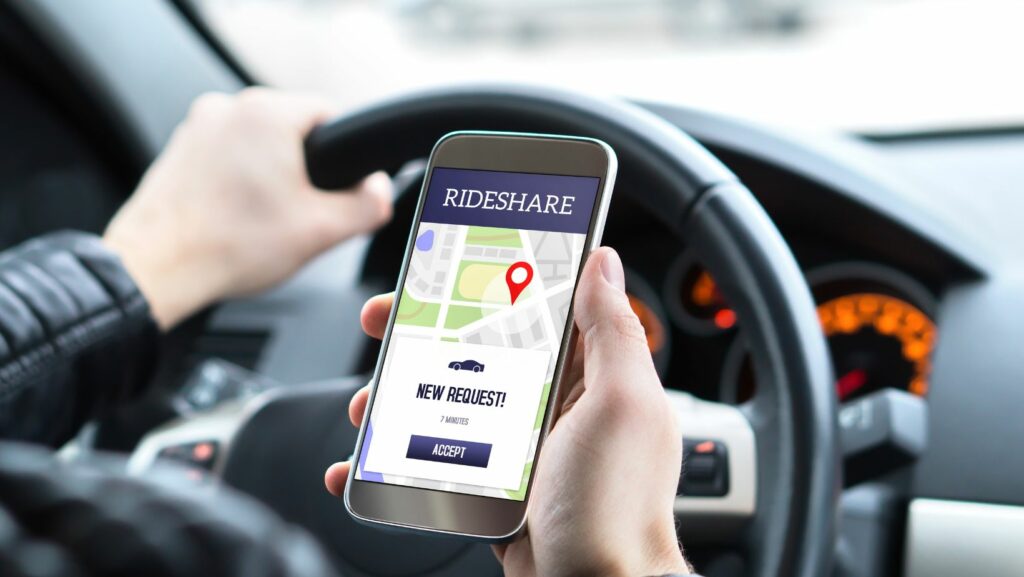Navigating the urban jungle has never been easier thanks to a plethora of ride-hailing services. But with Uber, Lyft, and traditional taxis all vying for your patronage, it’s often difficult to know which offers the best bang for your buck.
Whether you’re a budget-conscious commuter or simply curious, we’ll help you determine which of these three popular modes of transportation is the most cost-effective.
Overview of Uber, Lyft, and Taxi Services
In a bid to ascertain which is cheaper – Uber, Lyft, or taxis, understanding the basics of how these services operate becomes essential.
How Uber Works

Uber’s model is purely app-based. Users download the Uber app, sign up, and provide payment details. To book a ride, users input their destination, select a vehicle category – UberX, Uber SUV, etc., and then confirm the ride. The fare comprises a base fare, per minute and per mile charges.
How Lyft Works
Lyft, much like Uber, operates an app-based model. The procedure is almost identical – users download the Lyft app, sign up, input their details, select their vehicle category (Lyft, Lyft XL, etc.), and confirm the ride. The fare, like Uber, includes a base fare, per minute and per mile charges. Also, Lyft practices surge pricing, known as Prime Time, which can further hike the cost of a journey during periods of high demand.
How Taxi Services Operate

Taxis have long been the traditional means of hired transportation. You can hail a taxi on the street, call a dispatch service, or schedule a ride ahead of time. Unlike Uber and Lyft, taxis have standardized metered fares set by local regulations, involving a combination of distance and time. Taxi fares aren’t influenced by supply-demand curves or weather conditions, but they often include surcharges for specific areas and times. However, the total cost of the journey can be unpredictable if traffic is heavy.
Which Is Cheaper Uber Or Lyft Or Taxi
Determining the affordability between Uber, Lyft, and traditional taxis, hinges on different factors that include pricing models, dynamic rates, and geolocation influences. Each of these aspects follows unique trends, which affect the total fare and customer preference.
Pricing Models of Uber, Lyft, and Taxi

Uber and Lyft adopt a similar fare calculation model. The total fare includes a base fare, a per-minute charge, and a per-mile charge. Additionally, a booking fee is constant across all trips. The base fare, per-minute, and per-mile charges vary based on factors like the city, vehicle type chosen, and current demand. In contrast, taxis calculate their fares differently. They involve a base fare and then additional costs per distance traveled, usually on a per-minute or per-mile basis. Fares for taxis, unlike Uber and Lyft, are regulated by local authorities, ensuring more consistency.
Surge Pricing and Dynamic Rates
Surge pricing, a critical feature of Uber and Lyft’s models, increases fare prices in response to high demand or low supply. Its intent, to incentivize more drivers to be available during peak times. For instance, when a popular event just ended or during poor weather conditions, rates can increase significantly. Taxis, on the other hand, do not feature surge pricing. However, late-night surcharges or peak hour fees can apply, these largely depend on the city’s regulation.
Geographic Location Influences on Cost
The price difference between Uber, Lyft, and taxi services can be notable in varying geographic locations. In denser urban areas, taxis might prove more cost-effective due to local regulatory controls, while Uber and Lyft tend to be cheaper in suburban regions. Furthermore, in areas where ride-hailing app services are limited or non-existent, traditional taxis hold the edge. Several cities have specific rules for these services, like New York, which imposes a congestion surcharge for all app-based rides in Manhattan, further impacting the cost.
Ultimately, the cheapest option depends on individual circumstances such as location, time, and personal preference. By understanding these factors, riders can make informed decisions about their transportation choices. It’s a dynamic landscape, and savvy riders will keep a keen eye on fares to ensure they’re getting the best deal.



